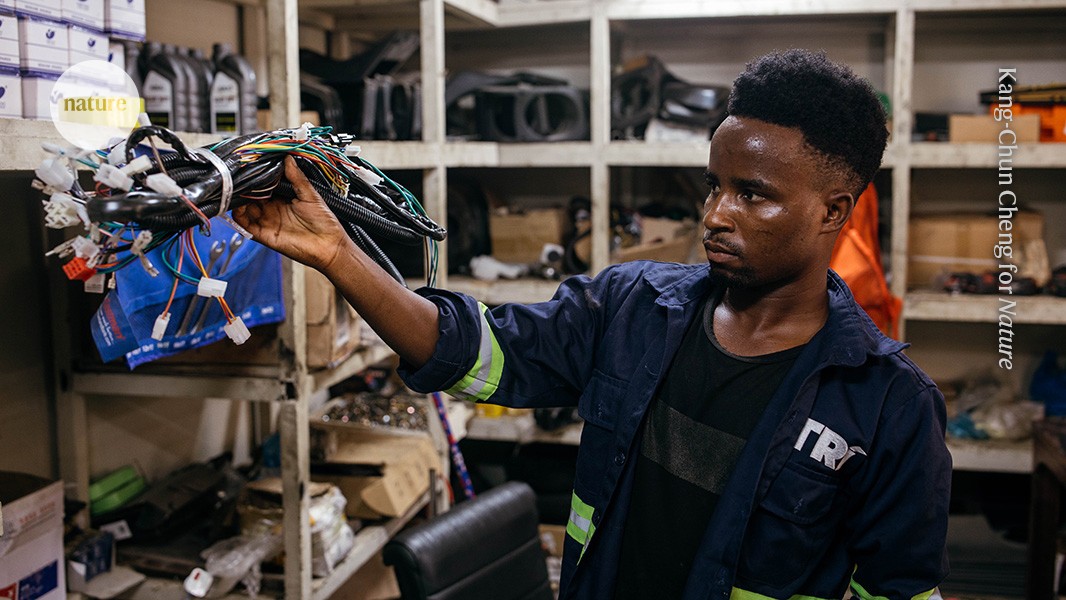
"Many people in Tanzania rely on three-wheeled vehicles because they are among the cheapest and safest modes of transportation. There are about 250,000 three-wheelers in the country and most use internal combustion engines."
"In 2022, I began working at TRí, a company in Dar es Salaam that aims to make three-wheeler transportation more sustainable and affordable by selling electric versions. Last year, we launched our second generation of vehicles, called E2, which have more features, including better range and an on-board charger."
"As a technician, I assemble the electric three-wheelers and fix any mechanical or electrical issues that arise in those that we've sold. It takes about two and a half hours to assemble a vehicle from the set that we receive from China."
"Repairs can take anything from one hour to two days, depending on the problem. For example, sometimes the lights don't work or the three-wheeler turns on and off by itself."
Tanzania relies heavily on three-wheeled vehicles for affordable transportation, with approximately 250,000 in use, primarily powered by internal combustion engines. In 2022, TRí launched electric three-wheelers, specifically the second-generation E2 models, which offer enhanced features such as better range and an onboard charger. A technician assembles these vehicles from components sourced from China, taking about two and a half hours for assembly. Repairs can vary significantly, taking from one hour to two days based on the specific issues faced, such as faulty lights or intermittent operation.
Read at Nature
Unable to calculate read time
Collection
[
|
...
]